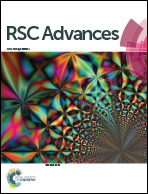Electromagnetic and microwave absorption properties of iron pentacarbonyl pyrolysis-synthesized carbonyl iron fibers
Abstract
The present study executed iron pentacarbonyl pyrolysis to synthesize one-dimensional structured carbonyl iron fibers (CIFs) via carrier gas induced flow. The obtained CIFs with a diameter of 100–300 nm and length–diameter ratio of more than 20, are actually composed of a large number of nanocrystalline aggregates. We investigated the dependence of the structure, morphology, and static magnetic and electromagnetic properties of the CIFs on the pyrolysis temperatures. CIFs synthesized at 300 °C (denoted as CIF-300) exhibited optimal microwave absorption properties dependent on the fiber structure and well-matched impedance. An optimal reflection loss of −58.1 dB was observed at 13.8 GHz with a matching thickness of 1.43 mm. Furthermore, CIF-300 presented a broad effective absorption bandwidth (RL ≤ −10 dB) of 5.66 GHz with a thickness of 1.44 mm, indicating that it could be applied in practical applications from 3.74 GHz to 18.0 GHz by tuning its thickness from 1.0 mm to 4.0 mm. This paper not only reveals that the CIFs synthesized at 300 °C have great potential application in microwave absorbing materials (MAMs) with thin thicknesses, wide absorption bandwidths, and strong absorption intensities, but also provides a simple approach to prepare metal fibers.



 Please wait while we load your content...
Please wait while we load your content...